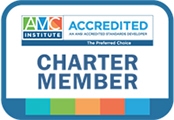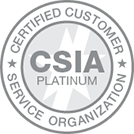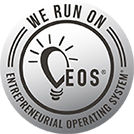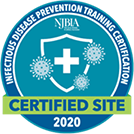Special Interest Groups (SIGs) are groups within an organization who share the same specialty, interest and/or background. SIGs offer a wealth of education and activities on the local-to-global scale, providing opportunities for sharing expertise and first-hand knowledge of the latest development trends. People who belong to SIGs are able to collaborate and exchange information about topics that they specialize in, or want to know more about.
Many of AH’s client partners have active SIGs, and accessing these is one of the biggest benefits of joining their association.
We will explore five of AH’s client partners who have varied approaches to how they manage, maintain and promote their SIGs.
MNRS RESEARCH INTEREST GROUPS
- Acute and Critical-Care Across The Life Span
- Adolescent Health
- CTSA Nurse Scientists
- Decision Making
- Family Section
- Gerontological Nursing Science
- Health of Diverse Populations
- Health Promoting Behaviors across the Lifespan
- Health Systems Policy and Informatics
- Nursing Education
- Pain and Symptom Management
- Palliative and End of Life Care
- Pediatric
- Physiology Behavior Genomics & Society
- Public Heath
- Qualitative Methods
- Self-Care
- Research thru Academic Clinical Partnerships
- Women’s Health & Transitions in Childbearing
THE MIDWEST NURSES RESEARCH SOCIETY 
The Midwest Nurses Research Society (MNRS) has been transforming how nursing is practiced for almost 40 years by promoting, disseminating and using nursing research to encourage, support and connect the next generation of nurse scientists. Today, with more than 1,300 members, MNRS is one of the largest and most influential nursing research organizations in the country, serving individuals in a 13-state Midwest region.
MNRS has 19 interest groups and refers to them as Research Interest Groups (RIGs). All RIGs consist of a leadership chair and have a listserv for nursing science community collaboration.
An MNRS membership comes with one free RIG membership per person. This helps a member discover their niche and allows for collaboration with a network of people who are involved with the same research. This is extremely beneficial for someone in this industry and a huge outcome from joining a RIG is creating published research. Collaboration with like-minded researchers creates a more thorough case.
RIG Engagement
Each RIG develops a mission statement and a set of goals, and one way the RIGs create member engagement and activity is through awards. Each RIG solicits their own awards within their group and recipients use this achievement as a resume builder and a badge of honor.
Throughout the year, RIGs have conference calls and use a listserv for document sharing and idea exchange, but their biggest collaboration opportunities come at MNRS’ annual conference. Each RIG has their own separate meeting within the conference and every four years, they each host an education session to share their findings or published work about a specific topic during the annual conference. This gives the RIGs a chance to highlight the work that they have done as a group, which educates members and entices them to join a RIG.
THE NATIONAL ASSOCIATION OF PROFESSIONAL ORGANIZERS 
The National Association of Professional Organizers (NAPO) is a group of approximately 4,000 professional organizers dedicated to helping individuals and businesses bring order and efficiency to their lives. Their vision is to have the world recognize the value of organizing and turn to NAPO as the leading organizing authority
NAPO members define their specialties according to the client populations they serve, the processes and tools they use and/or the channels through which they deliver their services. NAPO currently offers 9 SIGs for seasoned members who meet the membership requirements. SIG member dues are only $25 per year and groups include Students/ Adolescent Organizing, Organizing Seniors, Small Business Organizing and Technology Organizing. To qualify for SIG membership, a NAPO member must have at least three years of experience working in the SIG specialty. This ensures that each SIG is a network of true peers, and it allows each group to explore advanced topics because all members have a shared foundation of experience.
Technology
Within NAPO’s members-only social network platform, each SIG has its own private subcommunity with a discussion forum and online library visible only to the members of the specific SIG. Here, they can upload photos, documents and other resources to share with their colleagues. They also meet regularly via conference calls and most calls are recorded for on demand use.
SIGs helping newer members find their niche
Each SIG hosts one or more designated “SIG” tables during a general session luncheon at NAPO’s annual conference, and all attendees are invited to sit with any SIG of their interest, regardless of whether or not they currently meet the experience requirements for joining. Prospective SIG members begin to connect with current SIG members, and learn more about SIG activities and goals.
Leadership Experience
Each SIG has a designated volunteer leader, committee chair, and staff liaison. Individual SIG members may contribute to their SIG’s success in a variety of ways, including leading a discussion or research project, developing a white paper, sourcing and scheduling a guest speaker, speaking at NAPO’s Annual Conference, writing an article for NAPO News, the bi-monthly online publication for all members, and more.
THE AMERICAN SOCIETY OF TRANSPLANTATION 
The American Society of Transplantation (AST) was founded in 1982 and is an international organization of more than 3,000 professionals dedicated to advancing the field of transplantation and improving patient care by promoting research, education, advocacy and organ donation.
AST’s special interest groups are called Communities of Practice (COP). They have 12 COPs, which are free to join whether you’re an AST member or not. An individual can join a COP as a non AST member for one full year, to get more acquainted with the Society as a whole and begin their journey with AST. If they want to continue their COP membership after the year, they must then pay to become an AST member.
COPs allow members to generate collaborative content, such as valuable white papers and manuscripts, and provide topics and issues for their lobbyist in Washington D.C.
Each COP has its own mission statement as well as strategic plan. They have a clear purpose and they strive to reach annual goals.
Marketing of the Communities of Practice
AST helps to promote COPs by placing ads in their journal, on-site at events, and on their National website. Because of the consistent attention around promoting these valuable educational and collaborative groups, COPs gain new members and have had positive growth for many years.
Requirements of a COP
Each COP is required to submit symposium ideas each year which not only benefits AST as a whole, but also gives the COPs the chance to showcase their research. Because the COPs are so active, they not only have a chairman, but they also have an executive committee and a dedicated staff liaison.
Technology
AST is creating a new online community for the COPs where members can share ideas, documents and a calendar of events. Currently, utilizing LinkedIn groups and listservs to stay in touch, has been a good communication tool, but the new community will be a great addition for this active and engaged community.
THE SOCIETY FOR INFORMATION MANAGEMENT 
Since 1969, The Society for Information Management (SIM) has inspired the minds of the most prestigious IT leaders in the industry. Highly regarded as the premier network for IT leadership, SIM is a community of thought leaders who share experiences and rich intellectual capital, and who explore future IT direction. SIM has a different SIG variation, Working Groups (WG), which are core offerings in the membership package.
Self Supported Groups
SIM’s WGs have their own dues which are used for meetings and larger events. Each WG has its own mission statement and an active listserv. They hold two meetings a year where they can collaborate on ideas, share issues, troubleshoot, etc. WGs share education to all SIM members through published studies and IT trends surveys. This is beneficial for both WG members as well as all other SIM members for enrichment and advancement.
SIM also has a community of members called SIM Women. This group holds webinars throughout the year to converse and collaborate. The women that make up this community must be SIM members as well.
SOCIETY FOR BIOMATERIALS 
The Society For Biomaterials (SFB) is a multidisciplinary society of academic, healthcare, governmental and business professionals dedicated to promoting advancements in all aspects of biomaterial science, education and professional standards to enhance human health and quality of life.
SFB has 14 very active SIGs, the smallest one having 80 members. Each new or renewing SFB member now gets one SIG membership free. Any additional SIG memberships are $10 each, and dues go toward networking events and meetings. Students and retired active members may join a SIG for free.
Each SIG has its own statement of purpose and SIGs use social media, such as Facebook groups, to keep in touch when they’re not meeting in person. They have elected officers, an SFB Headquarters staff liaison and a representation on the Board of Directors by a SIG Representative who is elected by the SIG chairs every two years.
Integrate Special Interest Groups as an invaluable part of their membership. SIGs not only serve as collaborative platforms, but they are content curators as well. Connecting with like-minded peers on a more focused level helps new and seasoned member’s alike and not only benefits individual development, but the progression of the entire industry.
SIGs Drive the Annual Meeting
SIGs are an integral part of the SFB annual meeting. All of the SIGs are asked for speaking/presentation topic proposals and the Annual Meeting’s Program Planning Committee reviews the submissions. Once the sessions are selected, the SIGs help by soliciting abstracts from colleagues in their areas of expertise. Without SIG involvement, the program content would not be as robust or comprehensive as it is today.





